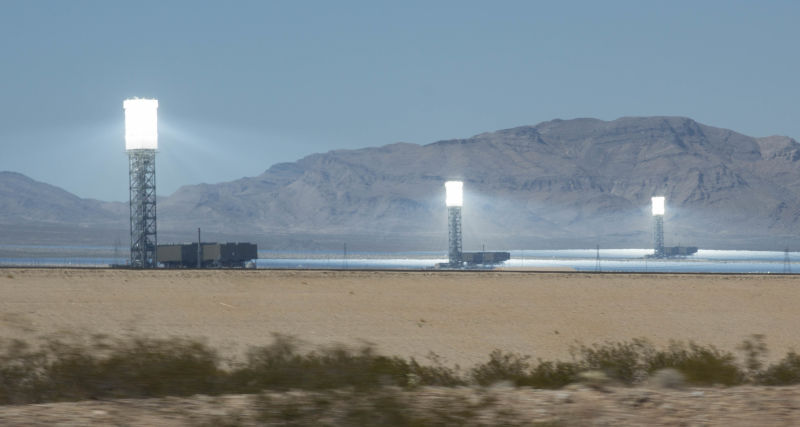PG&E wants to give the owners of the troubled Ivanpah solar plant six extra months to get their power-generation act together.
The utility is asking state regulators to approve “forbearance agreements” with the owners of the $2.2 billion, federally backed tower-power plant in the Mojave Desert, which is on the verge of failing to meet electricity production requirements set out in its power purchase agreements (PPAs) with PG&E.
As KQED reported last week, majority owner and plant manager NRG Energy said in a November quarterly report that it won’t be able to deliver the electricity it promised to PG&E. As a result, “PG&E may, at its option, declare an event of default” when a two-year “guaranteed energy production” period comes up on Feb. 1, 2016.
In its request to the California Public Utilities Commission, PG&E said if it doesn’t get the matter resolved by March 31, “PG&E may, in order to protect its customers’ interests, need to begin a process that could lead to its declaring an event of default under the PPAs and invoking the remedies available to it (including contract termination).” The power agreements are confidential.
The benefit of forbearance to NRG and minority owners Google and BrightSource Energy would be obvious -- they get six months to continue to ramp up performance, which was up 71 percent in the first nine months of 2015 compared with the same period in 2014, Ivanpah’s first year in operation.
